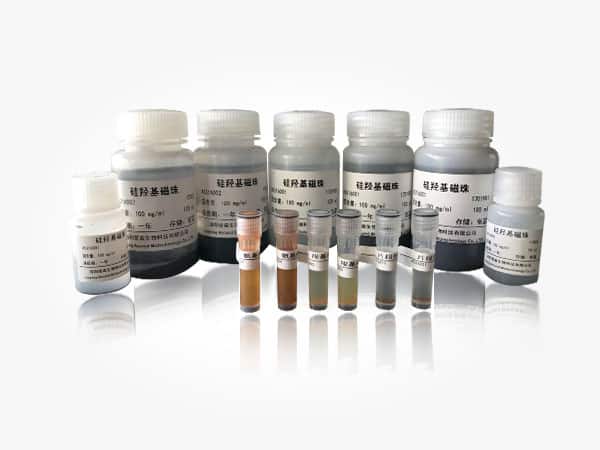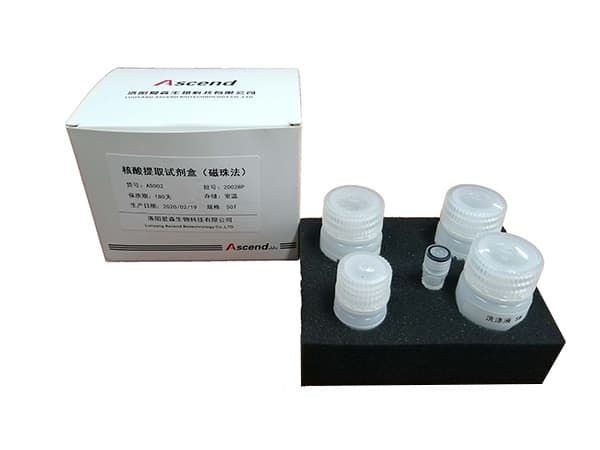Introduction of Magnetic Bead Method of Nucleic Acid Extraction Technology
With the rising popularity of nucleic acid testing for the new coronavirus, nucleic acid testing has become deeply rooted in the hearts of the people and has become the “gold standard” for pathogen detection. Since the new crown epidemic, a large number of sample test results have been required in a short period of time, and the need for rapid and efficient nucleic acid testing has become more and more urgent. Nucleic acid extraction, as an important step in nucleic acid detection, also faces high-throughput and high-efficiency requirements.
Nucleic acid detection depends on the development of nucleic acid extraction technology. At present, the main clinical applications of nucleic acid extraction methods include magnetic bead method, spin column method, boiling method, and rapid nucleic acid release method. Magnetic bead method nucleic acid extraction method has been widely used. Realize the automatic nucleic acid extraction method, and the automatic magnetic bead extraction method mainly includes magnetic rod extraction and pipetting extraction.
1. The principle of magnetic bead method for nucleic acid extraction
The magnetic bead method of nucleic acid extraction technology is a new type of nucleic acid extraction technology that uses nano-biological magnetic beads as a carrier. Nucleic acid molecules can specifically recognize and bind to the silicon hydroxyl groups on the surface of the magnetic beads, and aggregate or disperse under the action of an external magnetic field. Completely get rid of manual operations such as centrifugation and supernatant extraction in the traditional nucleic acid extraction process, so as to realize the method of nucleic acid extraction and purification.
Most of the magnetic beads used at present have a “core-shell” structure, which uses superparamagnetic nanoparticles as the “core”, and then a layer of polymer organic compound and a functional base layer are wrapped on the surface of the core. As a “shell”, it has better suspension in the solution. It is magnetized in a magnetic field and gathered under the action of magnetic force. It is very easy to separate from non-magnetic materials. There is no need for centrifugal operations during the operation.

2. The difference of nucleic acid extraction by magnetic bead method
Magnetic bead nucleic acid extraction consists of lysis, binding, washing, elution and other steps. The magnetic bead nucleic acid extraction reagents produced by different manufacturers are different, mainly reflected in: (1) different sizes of magnetic beads; (2) magnetic bead modification Different methods; (3) Different washing methods; (4) Different sample sizes.
The magnetic beads have small particle size, large specific surface area, and strong nucleic acid capture ability. They can be tested on the machine with magnetic beads to improve detection sensitivity. The particle size is different, and there are different preferences for nucleic acid fragments of different sizes. Generally speaking, magnetic beads with a larger particle size have greater magnetic responsiveness and a greater ability to capture small nucleic acid fragments. Magnetic beads with a smaller particle size have lower magnetic responsiveness and a greater ability to capture large nucleic acids. Magnetic beads with different particle sizes have different specific surface areas and different nucleic acid capture capabilities. At the same time, magnetic beads with a larger particle size have a smaller specific surface area and have a slightly poorer ability to capture nucleic acids; magnetic beads with a smaller particle size have a larger specific surface area and have a slightly stronger ability to capture nucleic acids. The elution step directly affects the yield of nucleic acid. Of course, the magnetic beads have small particle size and strong light transmittance, and can also use magnetic beads on the machine to detect when they do not affect the detection signal collection of the fluorescent quantitative PCR instrument (add PCR reaction during elution) Nucleic acid detection is carried out in the manner of mixing the magnetic beads and detecting the nucleic acid. There is almost no loss of nucleic acid. All template nucleic acids are detected on the machine, which can improve the sensitivity of nucleic acid detection.
Functional group-targeting nucleic acid probe modification further improves the extraction efficiency of targeted nucleic acid and improves the sensitivity of targeted nucleic acid detection. The functional groups contained in the functional base layer of the magnetic bead shell structure are different, and the specific binding ability of the magnetic bead and nucleic acid is different. The commonly used modified functional groups are amino (-NH2), carboxyl (-COOH), and hydroxyl (-OH).

Because the functional groups are different, the binding buffers used are also different. The hydroxyl group is negative and alkaline, and can exist stably in alkaline solutions, while the carboxyl group is acidic and can exist stably in acidic solutions. The functional group-targeting nucleic acid probe modification method can improve the specific binding ability of the targeted nucleic acid sequence and further improve the efficiency of nucleic acid extraction.
The fewer washing times, the less nucleic acid loss and the higher the nucleic acid yield. Generally speaking, the more washing times, the greater the possibility of nucleic acid loss, and the lower the nucleic acid yield may be. The more steps will affect the stability of automated nucleic acid extraction, the more difficult it is to achieve automation.
Increase the sample size and improve the sensitivity of nucleic acid detection. Increasing the sample size is also the usual practice of some manufacturers. For example, Roche Diagnostics and Abbott Diagnostics’ hepatitis B virus nucleic acid quantitative detection kits can achieve the purpose of high-sensitivity detection by increasing the sample size and increasing the nucleic acid concentration, and its sensitivity can reach 10 IU/mL.
In short, the magnetic bead method of nucleic acid extraction technology is currently the most widely used clinically automated nucleic acid extraction technology on the market, and it plays a main role in the prevention and control of the new coronavirus epidemic. The magnetic bead method nucleic acid extraction reagents produced by different manufacturers have different nucleic acid lysis methods, magnetic bead binding capacity, washing methods, and elution methods. Only the nucleic acid lysis efficiency is high enough, the magnetic bead specific binding capacity is strong enough, and the number of washings is sufficient. Only a small amount and high enough elution efficiency (or the elution of the original sample nucleic acid) can guarantee a higher nucleic acid extraction efficiency, and a high-sensitivity or hyper-sensitivity nucleic acid detection can be guaranteed to be better. The stability of automated nucleic acid extraction.



